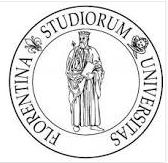Request Demo
Last update 08 May 2025
CD29 x hERG
Last update 08 May 2025
Related
1
Drugs associated with CD29 x hERGTarget |
Mechanism CD29 modulators [+1] |
Active Org. |
Originator Org. |
Active Indication |
Inactive Indication- |
Drug Highest PhasePreclinical |
First Approval Ctry. / Loc.- |
First Approval Date20 Jan 1800 |
100 Clinical Results associated with CD29 x hERG
Login to view more data
100 Translational Medicine associated with CD29 x hERG
Login to view more data
0 Patents (Medical) associated with CD29 x hERG
Login to view more data
22
Literatures (Medical) associated with CD29 x hERG03 Mar 2024·Expert Opinion on Therapeutic Targets
Targeting the hERG1 and β1 integrin complex for cancer treatment
Review
Author: Iorio, Jessica ; Arcangeli, Annarosa ; Duranti, Claudia
01 Jan 2024·Life Science Alliance
Integrins regulate hERG1 dynamics by girdin-dependent Gαi3: signaling and modeling in cancer cells
Article
Author: Becchetti, Andrea ; Coppola, Stefano ; Bagni, Giacomo ; Arcangeli, Annarosa ; Fanelli, Duccio ; Duranti, Claudia ; D’Alessandro, Franco Nicolas ; Montalbano, Alberto ; Schmidt, Thomas ; Iorio, Jessica ; Lastraioli, Elena ; Lulli, Matteo ; Chioccioli Altadonna, Ginevra ; Piazza, Francesco ; Fillion, Thibault
01 Jan 2023·Frontiers in pharmacology
Cardiac safety assessment of a novel recombinant bispecific antibody targeting the ether-à-go-go related gene 1 (hERG1)-β1 integrin macromolecular complex.
Article
Author: Duranti, Claudia ; Carlucci, Lucia ; Musumeci, Monica ; Colasurdo, Rossella ; Santini, Lorenzo ; Giammarino, Lucrezia ; Capitani, Chiara ; Coppini, Raffaele ; Palandri, Chiara ; Arcangeli, Annarosa ; Recchia, Fabio ; Cerbai, Elisabetta
Analysis
Perform a panoramic analysis of this field.
login
or

AI Agents Built for Biopharma Breakthroughs
Accelerate discovery. Empower decisions. Transform outcomes.
Get started for free today!
Accelerate Strategic R&D decision making with Synapse, PatSnap’s AI-powered Connected Innovation Intelligence Platform Built for Life Sciences Professionals.
Start your data trial now!
Synapse data is also accessible to external entities via APIs or data packages. Empower better decisions with the latest in pharmaceutical intelligence.
Bio
Bio Sequences Search & Analysis
Sign up for free
Chemical
Chemical Structures Search & Analysis
Sign up for free
